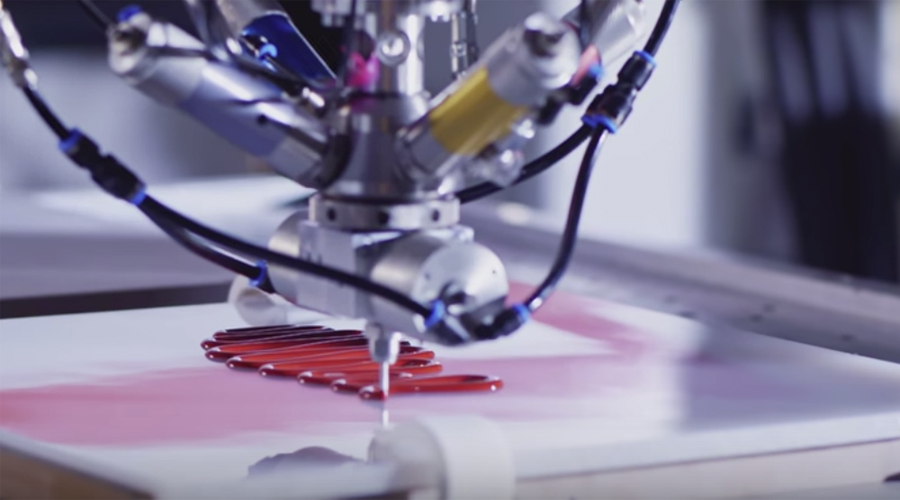Reebok unveiled its new Liquid Factory, which leverages 3D drawings and a proprietary liquid material to manufacture new footwear innovations in a speedier timeline.
If this sounds familiar, it’s because Reebok parent company Adidas Group recently launched its Adidas Speedfactory, which has a similar concept.
The Liquid Factory, developed by Reebok’s new innovation department, the Future team, uses software and robotics to literally draw shoes in three dimensions. This process is then married with the proprietary liquid material, created especially for Reebok by BASF, to draw shoe componentry cleanly, precisely and in three-dimensional layers. The proprietary layering technique is used to create “totally unique footwear, without the use of traditional molds,” said the company.
The project was spearheaded by Bill McInnis, former NASA engineer and current head of future at Reebok.
“Footwear manufacturing hasn’t dramatically changed over the last 30 years,” said McInnis. “Every shoe from every brand is created using molds – an expensive, time-consuming process. With Liquid Factory, we wanted to fundamentally change the way that shoes are made … With this new process, we were able to program robots to create the entire shoe outsole, without molds, by drawing in layers with a high-energy liquid material to create the first ever energy-return outsole, which performs dramatically better than a typical rubber outsole.”
The first concept shoe born from this manufacturing process is the Reebok Liquid Speed. Liquid Speed is an energy-return-focused running shoe that brings the outsole and lacing together in one piece. Reebok is releasing the Liquid Speed with a limited edition 300-pair production run.
In early 2017, Reebok plans to open its own Liquid Factory manufacturing lab in collaboration with AF Group Inc. of Lincoln, RI.
Photo and video courtesy Reebok
















